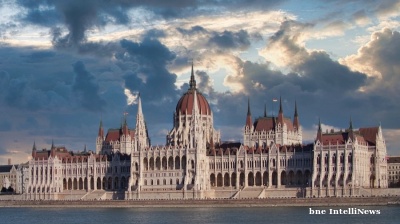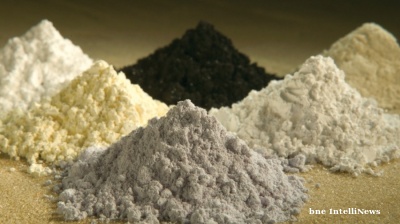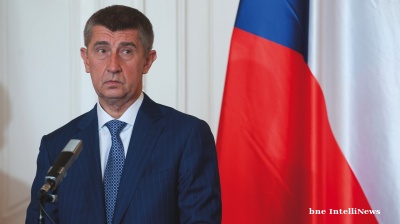Montenegro is heading towards its deepest political crisis of recent years as the no-confidence vote in Prime Minister Zdravko Krivokapic’s government approaches on February 4.
The coalition has arguably been doomed since the start due to the huge differences between its 20 small parties. Now it is finally falling apart, and in doing so is dragging down the government it appointed not much more than a year ago.
The current crisis stems from the latest in a series of problems between the coalition partners, beginning even before Krivokapic’s government was elected in December 2020. It unfolded in January after Deputy Prime Minister Dritan Abazovic proposed a new start for the coalition with a minority government and excluding the far-right pro-Russian Democratic Front, as well as the former ruling Democratic Party of Socialists (DPS).
Abazovic’s idea was not well accepted by the rest of the ruling coalition, which includes the Democratic Front but not the DPS, and in response he initiated a no-confidence motion against his own government, arguing that this was the normal democratic way to find out whether the government still has enough support.
In return, Krivokapic initiated a motion to remove Abazovic. Parliament is voting on his dismissal on February 3, while the no-confidence motion is scheduled for the next day. The two initiative is set to succeed with the help of the DPS — which is keen to see the government fall — and its allies that have 40 out of 41 MPs in parliament.
Weak, divided, unsuccessful
Montenegrins ousted the DPS from power in the general election in August 2020, but the coalition that was formed after that comprises numerous small parties whose political orientations range from centrist and pro-EU to far-right and pro-Russian. This has made the implementation of any reforms difficult and since September 2021 the political parties have been struggling to find an exit from the crisis.
In the end it was Abazovic’s civic movement United Reform Action (URA) that pulled the trigger. Previously seen as Krivokapic’s right hand man, the young ethnic-Albanian politician quickly gained popularity in Montenegro and many believe he might have been dreaming of taking the leadership position himself.
During the latest crisis that started in September 2021, political parties have made many suggestions how to exit from it, including to replace Krivokapic with Abazovic.
The deputy prime minister, who is also in charge of the police, quickly gained popularity after the revelation of several corruption scandals involving former DPS ministers, as well as with a successful police operation that discovered a tonne of cocaine.
However, there is also speculation that Abazovic might have been won over by the DPS – a party with more than three decades of experience in ruling the country. According to that version, Abazovic has betrayed the coalition and in return is hoping to benefit from a possible return to power by the DPS.
At the same time, Krivokapic seems unable to hold the coalition together and is accused by almost all its members of failing to fulfil the coalition’s pledges.
Reforms in the country have been stalled due to the constant disagreements between the coalition members, many of them ranging the Democratic Front against the rest of the parties. The pro-Russian party has blocked any attempt by the government to initiate reforms that would help the country advance on its EU membership path.
Two scenarios
Although the Democratic Front attempted to patch up the ruling coalition, triggering talks with the rest of the parties, there is almost zero chance for the government to survive. After its fall, expected on Friday, the ruling coalition will most likely disintegrate.
Montenegro is thus facing two scenarios after February 4: an early election or a government backed by the DPS.
There is little enthusiasm for a snap election, but a new government backed by the same formations as at present is almost impossible. Abazovic’s URA most likely would not be welcomed back to the coalition ranks, and although it has just four MPs, the loss of their support is enough for the coalition to lose its fragile majority. Currently, it has just 41 of the 81 MPs.
The DPS’ leader, President Milo Djukanovic, said in an interview with Mina news outlet that his party would back a minority government if necessary. This was seen as a clear signal that DPS wants to rule informally with Abazovic’s URA. Although Abazovic has repeatedly said he does not want DPS back in power, it is yet to be seen whether he was sincere.
On the other hand, several of Krivokapic’s ministers have suggested they would form a new political party if the country is heading to an early election. Finance Minister Milojko Spajic has said that if the no-confidence motion passes, he and his colleagues would consider entering politics with their own formation ahead of an early election, most likely in May.
Spajic said the most logical name for this new formation would be Europe Now after a programme of economic and social reforms drafted by the government. The programme envisages higher incomes and optimisation of budget revenues.
Economic Development Minister Jakov Milatovic and Health Minister Jelena Borovinic-Bojovic would also join. Krivokapic too might decide to join the new project.
Opinion

COMMENT: Hungary’s investment slump shows signs of bottoming, but EU tensions still cast a long shadow
Hungary’s economy has fallen behind its Central European peers in recent years, and the root of this underperformance lies in a sharp and protracted collapse in investment. But a possible change of government next year could change things.

IMF: Global economic outlook shows modest change amid policy shifts and complex forces
Dialing down uncertainty, reducing vulnerabilities, and investing in innovation can help deliver durable economic gains.

COMMENT: China’s new export controls are narrower than first appears
A closer inspection suggests that the scope of China’s new controls on rare earths is narrower than many had initially feared. But they still give officials plenty of leverage over global supply chains, according to Capital Economics.

BEYOND THE BOSPORUS: Consumed by the Donald Trump Gaza Show? You’d do well to remember the Erdogan Episode
Nature of Turkey-US relations has become transparent under an American president who doesn’t deign to care what people think.




